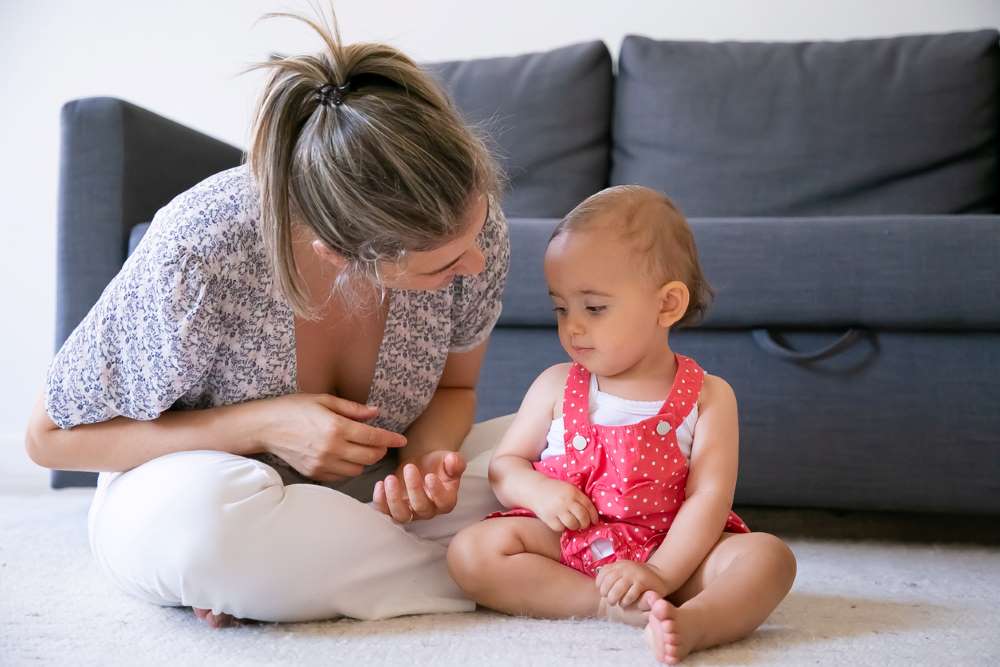
No one on the planet knows your child better than you. You know the babbling signs they make when signalling they’re hungry. Or the gestures they perform when it’s time to be held, or to express distaste, or when they’d like to play. This innate connection with your child is one of the greatest joys of parenthood.
However, as your kiddo gets older, it’s natural for parents and caregivers to start comparing their child’s speech and language development to other children. Have they still not said their first word? Or are they still using “baby talk” when other children they’re age have started to use fully-formed phrases?
In general, all children follow the same stages of communication development. However, there is a lot of variation in when young children will reach each stage. Just because your child is a late talker doesn’t mean they won’t catch up to their peers eventually. But what if they don’t?
Because every child is different, it’s hard for parents to determine whether they should “wait and watch” or if their child requires professional intervention from a licensed speech-language pathologist.
In this article, we’re going to discuss some of the warning signs of delayed speech and language development, and where to turn for help.
What’s Considered “Normal” Speech Development
Again, it can’t be overstated that all children progress on their own timeline. However, there are age-appropriate milestones that most children typically reach on the road to becoming effective communicators. While these milestones aren’t set in stone, they can help pediatricians and speech-language pathologist get a better sense of whether extra help is required:
-
6 Months: Even before children start using words, they should begin experimenting with their voice by making cooing, babbling, or gurgling sounds. They should be able to recognize and respond to your voice, express happiness or displeasure, and get excited when you appear.
-
1 year: By a child’s first birthday, their communication abilities should begin progressing. They may have started to say a few words like “mama” or “no” and you may see them begin to imitate the different sounds and utterances you make. Children should also start to recognize common items. For example, they may not be able to pronounce “toothbrush,” but they should begin to recognize it’s used for brushing their teeth. Additionally, at this age children can be expected to follow very simple directions, like “sit” or “come here.”
-
2 Years: This is the age childrens’ vocabulary should begin to develop, and they should be speaking about 50 words or more. They should also start to string some of these words together to make very simple phrases or ask basic questions. While it’s not expected that a child’s words are understood 100% of the time by you or their immediate family members, you should be able to derive meaning from their language about 50% of the time.
-
3 Years: A child’s vocabulary should now be much more robust, having expanded to about 1,000 words. They should be using these words in intelligible sentences to communicate their thoughts, wants, and feelings. Your child should also be receptive to instructions and directions. While they’re speech may not be understood 100% of the time, adults less familiar with your child should be able to understand what they’re trying to communicate in the majority of situations.
What are Speech and Language Delays?
A child can be considered to have a speech or language delay when they don’t meet common developmental milestones appropriate for their age.
While speech and language delays often coincide, they are in fact different. Just because your child has a speech delay doesn’t necessarily mean they’re language delayed, and vice versa.
A person’s speech includes how they articulate the sounds that comprise words. For example, many children commonly struggle to pronounce certain sounds, like /s/ /z/ or /th/, causing mispronunciations and making their speech harder to understand. Speech delays can be developmental in nature, or caused by oral-motor problems such as not coordinating their lips, jaw, and tongue properly to form legible sounds.
On the other hand, a language delay affects how children understand and use language, both verbally and non-verbally. Language delays come in two forms: expressive and receptive. Children with expressive language delays may be able to pronounce words perfectly, but struggle to use these words to form coherent sentences and express their ideas. Receptive language delays impact how children process information and “decode” language. They may use words correctly, but have difficulty understanding what others are trying to say, learning new vocabulary, and extracting meaning from oral communication and verbal text.
Warning Signs That a Child May be at Risk for a Speech or Language Delay
As mentioned, there’s no magic formula for determining if your child is speech or language delayed. What could be a temporary bump on the road to communication for one child, could be a sign of a more serious problem for another.
Generally, here are some important red flags to closely observe and monitor that could signal your child is at a higher risk for a speech and language disorder. These signs are most relevant to children between the ages of 18 and 30 months.
-
Using Gestures: There are many forms of language beyond just verbal communication. These include pointing, gesturing, waving, making facial expressions, and more. Even before a child utters their first word, they should be regularly using these gestures to communicate basic messages: to say hello and goodbye, ask to be picked up, point to food when they’re hungry. If your child is actively using gestures, they have a higher likelihood of catching up to other childrens’ level of speech and language development.
-
Language Comprehension: Children generally understand language before they can use words themselves. If your child is able to follow basic directions, respond to your voice and their name, and actively point to objects when you label them, this is a great sign! However, if you notice they’re not receptive or understanding of what others are saying, they may have a language delay.
-
New Vocabulary: While some children don’t grasp words as fast as others, they should still be learning and using new vocabulary each month. If they seem to be expanding their bank of vocabulary, and beginning to string these words together into simple phrases, they’re more likely to just be experiencing a hiccup in their language development. However, if they’ve seemed to hit a vocabulary plateau, they may require professional help.
-
Pronunciation of Sounds: Some sounds and letters, like /s/ and /z/ prove trickier for children, and they may not be able to use them correctly until 6-7 years of age. However, other sounds are easier for children to master. By the time your child is three years old, they should be using simple sounds in words properly, such as /b/ /p/ and /m/. Make sure to actively monitor these speech sounds and see if your child is improving over time. If not, they could be more likely to have an articulation disorder.
When Should You Seek Professional Help?
As a parent or caregiver, you never want to feel guilty that you could have acted sooner. After all, the earlier speech and language disorders are recognized, diagnosed, and treated, the easier they are to correct.
Parents have amazing gut instincts. If you think your child’s communication isn’t as evolved as it should be, or you notice that deficits in their speech and language development are interfering with their day-to-day life, it’s important to be proactive. That’s why it’s imperative to keep an open line of communication with your doctor or pediatrician. Additionally, you can have your child professionally evaluated by a speech-language pathologist (SLP).
SLPs are communication experts that work with children (and adults) on a wide range of speech and language problems. Your speech therapist will use their experience and expertise to test your child on a variety of age-appropriate skills, and make a treatment recommendation tailored to their needs. They will answer your concerns, explain what’s typically normal for your child’s age, and suggest whether your child would benefit from speech therapy or whether it’s premature. Additionally, a speech therapist can provide a number of exercises and activities to practice speech and language skills at home.
Speech therapy for children can be offered in a variety of settings, including a school or private practice. Increasingly, more families are turning to online speech therapy because of its affordability and convenience advantages. With virtual therapy, families can receive the same high-quality and effective care delivered online via video chat. This gives families more flexibility to conduct sessions around their work and school schedules, and is often a more affordable alternative v.s. traditional, in-person therapy.



























